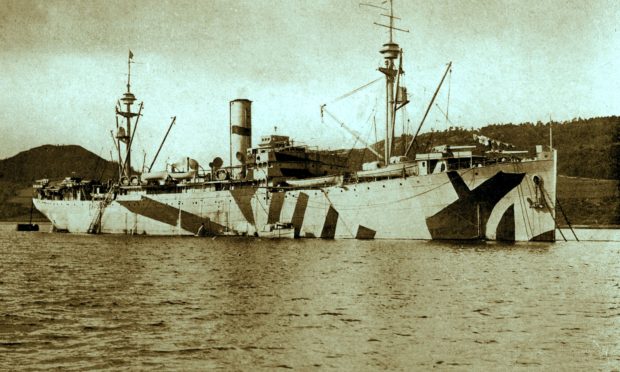The role they played was vital, but the presence of thousands of American sailors in the Highlands near the end of the First World War is a relatively unknown part of local history.
Now a new book details the impact made by the troops in helping to force Germany to agree an Armistice and on the communities in which they were based.
The Northern Barrage, published by Inverness Local History Forum and compiled by members of various heritage societies in the Moray Firth and Cromarty Firth areas, recounts the laying of a vast minefield in the North Sea, between Orkney and Norway, to destroy or deter U-boats.
The book was edited by forum vice-convener Adrian Harvey and Susan Kruse, from (Archaeology for Communities in the Highlands (ARCH) Strathpeffer, and sponsored by the National Lottery Heritage Fund and Inverness Common Good Fund.
Operating from June to November 1918, US vessels laid a huge barrage totalling 57,470 mines alongside the Royal Navy, which laid a further 13,546.
The aim was to prevent German U-boats breaking into the Atlantic, as well as denying the Germans food and war material imports by sea.
The operation ended days before the Armistice, with five U-boats confirmed as destroyed and eight damaged.
The US Atlantic Fleet Mine Force was commanded by Rear Admiral Joseph Strauss, who hoisted his flag on the USS Black Hawk, anchored off Munlochy Bay.
Dalmore Distillery in Alness, and Glenalbyn Distillery in Inverness were transformed into major bases for the US sailors and thousands of deadly mines were primed at both sites.
There were also small US Navy detachments at Corpach, near Fort William, and Kyle of Lochalsh, where the mines arrived by sea, and from where they were transported by canal or rail to Inverness and the Cromarty Firth.
The Highland Hotel in Strathpeffer was earmarked as a hospital for the mine force.
While the US sailors were generally welcomed in Inverness, their presence led to scuffles with newly-demobbed servicemen as they were seen as rivals for the affections of local women.
About 80 Highland girls eventually married US sailors and emigrated with their new husbands.
Inverness Local History Forum president Maureen Kenyon said while some local history books have mentioned the US activities, there has never been any in-depth research carried out and published.
“Although they were only here for around 18 months, the presence of thousands of US Navy servicemen based in the Invergordon and Inverness area certainly appeared to have made quite an impact.
“The various heritage groups involved decided the information we were uncovering had to be pulled together, shared and published.
“The result is a book which tells the story of an important part of our local military and social history.”
